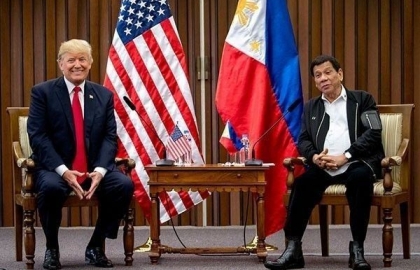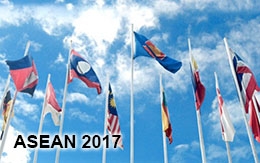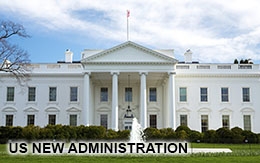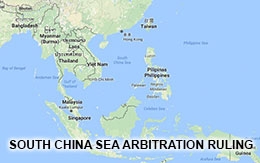Philippine Fulcrum
To strengthen its position in the Philippines and thus in the first island chain, the United States must achieve two key goals: diversify its diplomatic engagement with Manila and coordinate military resources and strategy.

The U.S. has neglected the Philippines for too long, providing China with a geostrategic opportunity. For example, Beijing has hosted Philippine President Rodrigo Duterte five times since he took office. Each meeting brings China closer to control over Philippine waters. China is financing a variety of local infrastructure projects, hazarding “debt traps” whereby China gains control of key assets in the Philippines, including the railway connecting Subic Bay and the Clark Economic Zone. If China successfully draws the Philippines into its fold, it will put a strait jacket on the U.S. in the Indo-Pacific, making it significantly more difficult to deter China’s expansion into the South China Sea (SCS). Losing the Philippines may be irreversible.
Despite its drift toward Beijing, Manila is not yet lost. Notwithstanding China’s investment, the two governments clash over Beijing’s disregard for Manila’s maritime rights. Duterte initially resolved to ignore the 2016 Permanent Court of Arbitration ruling in favor of a joint oil and gas venture with China; but now he has changed his tone, opting to keep the discussion open regarding the terms of China’s presence in Philippine SCS waters. China continues to ignore the ruling, leaving Duterte in the difficult position of deciding whether to challenge China or submit. Although he may acquiesce to China, Duterte is currently at a crossroads, giving the US a prime opportunity to reverse Beijing’s march across Southeast Asia.
This window of opportunity will not stay open for long. At the beginning of October of this year, Duterte visited Russia for five days, discussing joint oil and gas exploration in the SCS and potential arms deals. Duterte also voiced a desire to revise the global order as determined by the U.S. without declaring a complete break from the 1951 U.S.-Philippines Mutual Defense Treaty (MDT). So Duterte’s lack of confidence in Beijing will not necessarily drive him to Washington. Duterte’s field of potential great power allies is growing, meaning the U.S. cannot afford to neglect the Philippines any longer.To strengthen its position in the Philippines and thus in the first island chain, the United States must achieve two key goals: diversify its diplomatic engagement with Manila and coordinate military resources and strategy.
Diplomatic Engagement
The U.S., including the Navy specifically, must diversify its diplomatic engagement in the Philippines. The US has a deep reserve of good will with the Philippine people. Philippine Secretary of Foreign Affairs Teodoro Locsin pointed this out in the South Morning China Post on September 24, 2019: “Eighty per cent of the Filipinos are nuts about Duterte; 90 per cent of Filipinos are nuts about the United States.” It is time to reinvigorate that well.Addressing the Elephant in the SCS (Short-Term)
Relations between China and the Philippines have ebbed and flowed during Duterte’s tenure, but the current low requires the U.S. to respond immediately to ensure Manila does not swing to Beijing. In the short-term, the U.S. must credibly communicate to Duterte that his interests are more likely to be realized if aligned with U.S. interests as opposed to those of China or Russia.First, the U.S. should directly consult Duterte and his naval officers regarding their concerns and interests in the SCS. Beijing is inflexible regarding Duterte’s pleas, meaning the Navy can capitalize on Manila’s desire for flexible alternatives by meeting with Duterte and his naval officers to coordinate interests. China hopes to finalize an SCS code of conduct (COC) agreement with the Philippines and other ASEAN members before 2021, while the Philippines serves as ASEAN’s China coordinator. Recent disagreements between Duterte and Xi may stall the finalization of such a COC. Therefore, the President and other top naval and diplomatic officers should meet with Duterte and other naval officers quickly to prevent the COC framework from acting against U.S. interests. Such a meeting should be public to communicate that the U.S. is friendly to the interests of Southeast Asian states. This consultation, rather than exhibiting mere diplomatic theater, should accomplish two goals: support counter-arrangements ensuring the Philippines does not sign a COC favoring China and propose joint freedom of navigation operations (FONOPS) in the SCS.
Second, the United States should initiate backchannel diplomatic discussions with the Philippines. Initial public demonstrations of support are helpful, but Manila will commit to little publicly to avoid the risk of offending China or being drawn unwillingly into a war. Duterte fears that the only military option is war, but he has not yet constructed a ladder of controlled military responses designed to escalate conflict to deter China without provoking them. Therefore, concurrent with public engagement, lower-level officials from the U.S. and the Philippines should meet to achieve two main goals: construct a ladder of progressive, intermediate military responses and affirm specific U.S. defense commitments. For example, the U.S. should pledge to defend the Second Thomas Shoal if China pushes against the Philippine military in the area, and officials from both militaries should agree on a series of escalatory responses if China does disrupt Philippine military activity in the area. Similarly, as Adrien Chorn and Monica Michiko Sato recently argued, clarifications to the MDT could be discussed whereby the Philippines is empowered to respond more directly to China’s gray zone tactics.Philippine Leadership in an Integrated ASEAN (Medium-Term)
Beyond short-term engagement, the U.S. must strengthen cooperation between the Philippines and ASEAN in order to wean Duterte off China. In the SCS dispute and the Belt and Road Initiative (BRI), Beijing prefers bilateral engagement with individual member states over interaction with ASEAN as an institution. The U.S. should encourage the opposite in four ways.First, the U.S. should foster regional self-determinism in Southeast Asia with Filipino leadership. Despite efforts to appear united, ASEAN member states have disagreed on how to deal with China. Positions range from Cambodia seeking to deflect criticism against China to Vietnam expressly combatting a COC on Beijing’s terms. This position asymmetry makes it easier for China to divide and conquer. The Philippines is uniquely positioned to deal with this issue as coordinator of ASEAN-China relations until 2021. To capitalize on that position, the U.S. should publicly endorse ASEAN’s regional interests and agenda, prioritizing them at ASEAN summits. The U.S. should also publicly endorse Duterte’s role as China coordinator and his crucial role in shaping ASEAN’s future.
Second, the U.S. should increase engagement with ASEAN as a unit, specifically in cooperation with the Philippines. China’s strategy to this point has involved dividing and conquering ASEAN, but the resulting division in ASEAN hampers Beijing’s ability to secure unanimous support for a COC agreement in the SCS. The U.S. and the Philippines should arrange a special ASEAN summit to address ASEAN regional goals and the problem of China in the SCS. Although the U.S. meets with ASEAN members during the ASEAN Regional Forum (ARF) and the East Asia Summit, China’s participation in the ARF and the ASEAN+3 coupled with its geographic proximity gives the U.S. little room to distinguish itself as a more viable ally. With a separate meeting, the U.S. can cut through the diplomatic clutter, engage in a more focused discussion on the SCS dispute, and pave the way for the Philippines to establish a consensus on how to respond to the dispute. It will also help shift the Philippines’ diplomatic and political focus away from dependence on great powers to an agenda establishing regional self-determinism.Third, the U.S. must partner with the Philippines to enforce the rule of law. In the SCS dispute, a committee of experts could set forth the parties’ various rights under UNCLOS as a binding declaration or as the basis of final negotiations between the claimant states. The Navy should also abide by UNCLOS to demonstrate its support. Consolidating claims and ratifying UNCLOS will solidify an international diplomatic coalition that imposes significant costs on the Chinese navy.
Fourth, the U.S. must combat China’s BRI infrastructure spending in the Philippines and in Southeast Asia. Despite its various debt-related dangers and accountability concerns, the BRI remains an attractive prospect to poorer states suffering from infrastructure deficits. Since Southeast Asia is ripe for infrastructure and connectivity investment, the U.S. must increase its infrastructure investment immediately. The U.S. currently has only one free trade agreement with a state in the region (Singapore) and no bilateral investment treaties (BITs), so the U.S. should negotiate and sign BITs including infrastructure investment with the Philippines, Indonesia, and Malaysia, with an option to increase infrastructure spending in other ASEAN member-states. The U.S. should also discuss infrastructure investment programs with ASEAN as an institution. In pursuit of this agenda, the U.S. should not try to mirror the BRI. China uses government funding methods (sovereign wealth funds and government-funded development banks) to accomplish the BRI that the U.S. cannot match in speed and discretion. The U.S. can, however, disrupt Chinese infrastructure investment by investing strategically in the infrastructure of ASEAN member states without using loans or debt financing, thus providing a more attractive option than applying for BRI loans. Japan already provides alternatives to the BRI in Southeast Asia and elsewhere. The U.S. should act likewise to dilute China’s influence and build good will that will streamline military mobilization later.Engaging in these diplomatic activities now will supply a diplomatic need that China refuses to fulfill, giving the United States a stronger foothold from which to engage in effective military strategy. Employing aggression or diplomacy exclusively will fail but developing soft power first will amplify hard power exertions.
Military Coordination
Militarily, the U.S. must increase its ability to deter and, if necessary, defeat China at the first island chain. While such a strategy encompasses far more than only the Philippines (such as pointed out by Mahnken, et al., in “Tightening the Chain”), the Philippines are nonetheless central to any strategy focusing on the first island chain. Consequently, the U.S. military must coordinate with Manila. Short- and medium-term changes to America’s military posture, especially its naval posture, can help achieve these goals.Renewing Ties and Boosting Capabilities (Short-Term)
There are two main actions the U.S. can take immediately regarding the Philippines that will enhance deterrence of Chinese aggression and dramatically raise the costs for China should hostilities break out.
First, the U.S. should increase the rotation of American military personnel into the Philippines. This initially requires renewing and reinvigorating its ties with the Philippine military. Although reconnection is already underway as demonstrated by the Enhanced Defense Cooperation Agreement (EDCA) and recent combined operations exercises, more should be done. The U.S. should do all it can to bolster friendly elements within the Philippine military and, if necessary, to prevent any purge of U.S.-friendly officers. More Philippine troops should be brought to the U.S. for training and contact with their US counterparts and vice versa. The U.S. officer rotations should focus on re-establishing operational capabilities particularly those relevant to the SCS, furthering progress made under the EDCA. While the EDCA prohibits permanent U.S. bases, the U.S. can rotate personnel such that in practice the American presence is permanent. Moreover, the tempo of training and joint exercises can increase. The U.S. should also share command functions with its Philippine counterparts in order to provide experience and improve capabilities. This will also have positive secondary effects on Philippine moral and confidence.
Second, the U.S. should provide Philippine units with state-of-the-art weaponry, especially systems that support asymmetric capabilities. Philippine units need long-range mobile anti-ship missiles (ASMs), the training to use them, and targeting capabilities. In the short-term, targeting can be provided by U.S. assets, which will also serve to improve interoperability. Surface to air missiles (SAMs) might be provided to help protect Philippine assets. While operating submarines is prohibitively expensive, missile armed fast patrol craft would add another layer of uncertainty for Chinese planners and therefore further enhance deterrence. Other hardware may be appropriate in the longer-term.All of these actions increase U.S. and Philippine capabilities and therefore enhance deterrence. Conflict with China is less likely if the U.S. and its allies operate from a position of strength, and these recommendations strengthen allied capabilities.
Securing the Indo-Pacific (Medium-Term)In the medium-term, the U.S. needs to settle on an effective and affordable strategy for the Indo-Pacific. Such a strategy should offer the ability to prevail in a limited war (i.e., without kinetic strikes deep into Mainland China). Recommendations for U.S./Philippine relations, of course, must comport with theater-wide strategy. The following suggestions are therefore subject to modification to support overarching strategy.
First, the U.S. should encourage increased cooperation among the Philippines and other U.S. allies in the region such as Japan and Australia. This is already happening to some extent, but can be improved through increased joint exercises, training, and joint operations such as Philippine-Japanese P-8 patrols. Such patrols should become routine, enhancing Western capabilities and situational awareness in the region.Second, the U.S. should renegotiate the EDCA such that the U.S. can again establish a permanent military presence in the Philippines. If successful, this would more closely tie the two countries and enhance deterrence. It would also boost Philippine confidence while simultaneously allowing the U.S. to have more say in local decisions. If the U.S. had a local presence during the 2012 Scarborough crisis, the Chinese might have been less aggressive. Analysis is required to determine which bases would be best for a permanent U.S. presence, but returning to Subic Bay Naval Base and Clark Air Base should not be ruled out. New bases might be in order, especially on the fringes such as the Batanes, somewhere on the Celebes Sea, and of course, Palawan.
Third, ASEAN military cooperation needs to be improved and formalized. The U.S. can help Manila begin this process by negotiating a division of duties among interested parties, especially Vietnam, Malaysia, Indonesia, Brunei, and perhaps Singapore. If China becomes less aggressive, greater cooperation will be less necessary. But if China continues its aggression, these parties can increase cooperation possibly leading eventually to some sort of formal alliance. China would therefore have an incentive to reduce its aggressive behavior.Fourth, the U.S. should help the Philippines repair the Thitu airstrip (as has been offered) and upgrade the Philippine base on Thitu. One way to do this would be to emplace SAMs and ASMs on Thitu, much as China has done on its manmade bases in the SCS. Some more permanent establishment on Second Thomas Shoal might also be considered if only as an escalatory action in response to undesired Chinese behavior such as militarizing Scarborough Shoal.
Fifth, the U.S. should provide larger, more capable Coast Guard vessels to the Philippines so that it is not overwhelmed by bigger Chinese vessels. Training and joint operations between the U.S. Coast Guard and the Philippine Coast Guard are also in order.Sixth, in order to demonstrate its resolve, the U.S. must upgrade, harden, and expand its military facilities in the Indo-Pacific. American bases in Guam and Japan are vulnerable. In addition to hardening these bases, the U.S. must disperse its forces to prevent losing all its capabilities in a surprise missile attack.This would also bring hard currency to smaller states in the Pacific and act as a counterweight to Chinese expansion. These states need an alternative to using their harbors and natural resources as collateral for Chinese loans. This will undermine Chinese efforts to pull these states into its orbit. The U.S. should also establish long-range firepower throughout the region. Withdrawing from the INF was a step in the right direction and should allow the U.S. to field a deterrent to China’s long-range missile arsenal, though for the moment the U.S. is far behind.
Seventh, the Navy needs to improve its anti-submarine warfare capabilities in the West Pacific and especially along the first island chain, which after all is part of the appeal of these islands. Given the advances in autonomous unmanned underwater vehicles, the U.S. may eventually be able to maintain situational awareness across the exits out of the first island chain without more permanent assets. But it is not clear how developed the necessary artificial intelligence is, nor how long it will take to develop these capabilities. In the meantime, consideration should be given to a GIUK-like set of underwater listening posts across the various straits and channels. These could be anchored in places like the Batanes and the Babuyan Islands. To the south, Jolo Island and Panglima Sugala could anchor such a surveillance system. This would demonstrate America’s commitment to the Philippines.Conclusion
Winning Duterte and Manila back is imperative to securing the first island chain. By diversifying its diplomatic engagement with Manila and coordinating military resources and strategy, the U.S. can reject China’s revisionist changes in the SCS and provide the Philippines with the wherewithal to withstand Chinese aggression, with American assistance. Together, these short and medium-term policies will more closely link the US to its allies (dejure and defacto), strengthen deterrence, and increase the likelihood of prevailing in a conflict with China, even in the Indo-Pacific. If the U.S. fails to act, Chinese expansion may irreversibly hamstring the Navy’s mobility and effectiveness in the Indo-Pacific.
Aaron Kelley is a senior Political Science student at Stephen F. Austin State University. Before starting his undergraduate studies, Kelley lived for several years in North Africa and Southeast Asia, competing in Asian Parliamentary Debate as a junior and senior in high school.
Michael Tkacik is a Professor of Government at Stephen F. Austin State University in the United States. His research interests focus on the South China Sea, rising China, and US foreign policy.
Click here for pdf file.










